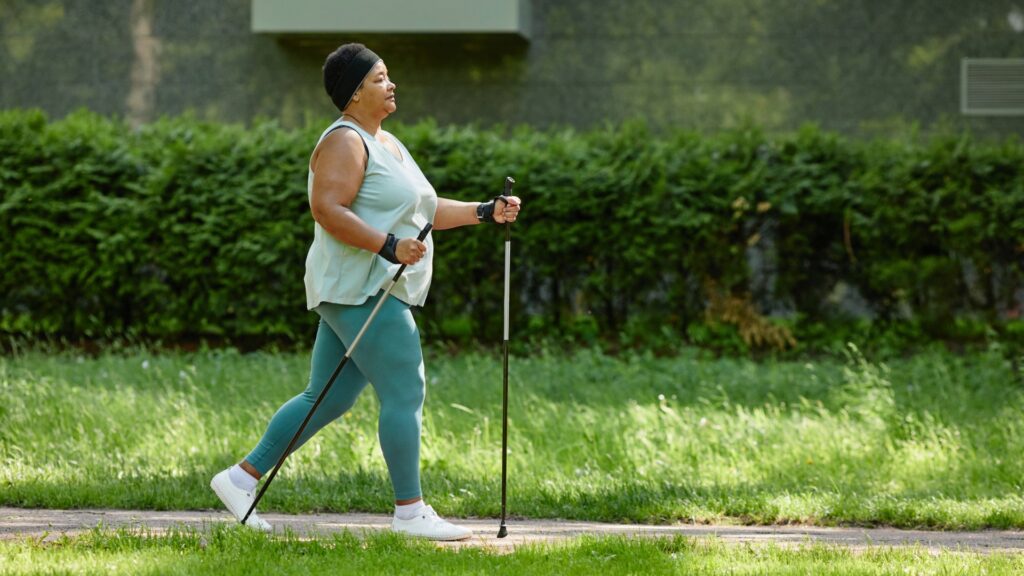The right exercise for brain and nerve health
Our brain and nerves are central to everything our body does, from how we think and remember to how we move and feel. Keeping your brain and nerves healthy helps support quality of life, independence and wellbeing.
Whether you’re looking to enhance general brain health or manage specific neurological conditions, exercise can help improve blood flow, neuroplasticity, mood and cognitive function.
Home / Brain and nerve health

The role of exercise for brain and nerve health
Research shows that regular physical activity boosts blood flow to the brain, reduces inflammation, and promotes neuroplasticity, which is the brain’s ability to adapt and form new connections.
These effects support thinking, memory and mood and can even help protect against developing neurological conditions like dementia.
Consistent exercise over time creates lasting benefits – one-off workouts have an immediate effect, but lasting change comes from habitual activity.
Effective brain-boosting exercise combines:
- Aerobic activity (like walking, swimming or cycling) to enhance blood flow and support growth of brain cells
- Strength or resistance training, which supports executive function, decision-making and structural integrity of areas like the prefrontal cortex
- Balance, flexibility and coordination work, such as tai chi, pilates or dual-task training, which improves neuromotor control and supports brain health through novel movement patterns.
Conditions affecting brain and nerve health

Parkinson's disease
Being active helps manage symptoms like rigidity and gait challenges. Exercise can improve motor control, mood and confidence.
Alzheimer's and dementia
Physical activity is one of the few modifiable lifestyle factors that can reduce risk and slow progression of Alzheimer’s and dementia.

Multiple sclerosis
Exercise helps manage fatigue, strength loss and coordination challenges. A blend of aerobic, resistance and balance training can support quality of life.
Acquired brain injury
Following head injury, exercise supports neuroplasticity, cognitive function, mood and physical recovery.

Neuromuscular conditions
For people managing nerve or muscle impairment (such as peripheral neuropathy or muscular dystrophy) a combination of different exercise can make a real difference.
Stroke recovery
Exercise is crucial for stroke survivors. A tailored program helps restore mobility, strength, balance and functional independence.
Get started with exercise safely
Seek expert guidance
An Accredited Exercise Physiologist (AEP) can personalise your exercise plan, which is especially important when living with neurological conditions. AEPs are trained in safe, condition-specific prescription and behaviour change support. You can find an AEP near you for help tailored to your situation.
Focus on variety and novelty
Novel or complex movement like tai chi, dance or combined coordination tasks promotes stronger neural connections through neuroplasticity. Even small changes in routine (such as trying a new activity) contribute to brain resilience.
Listen to your body
Always begin with a warm-up and stop if you experience sharp pain, dizziness or excessive fatigue. Adjust intensity or duration as needed, especially if you feel symptoms like tingling or weakness.

Frequently asked questions
Can exercise reverse nerve damage?
Exercise may not completely reverse severe nerve damage, but it can improve symptoms, enhance circulation, reduce inflammation and support nerve regeneration.
Does exercise improve cognitive function or protect against dementia?
Yes. Regular activity enhances memory, thinking skills and mood, while also lowering the risk of cognitive decline and dementia.
What types of exercise best support brain health?
Aerobic activities like walking, swimming, cycling or dancing are highly effective. Strength training, balance work and mind-body practices like tai chi also help.
How much exercise is needed for brain and nerve benefits?
Most guidelines suggest at least 150 minutes of moderate activity (like brisk walking) or 75 minutes of vigorous activity each week, plus two sessions of strength training.
Can walking help with nerve issues like neuropathy?
Yes. Walking improves blood flow to the legs and feet, supports nerve function and may reduce symptoms such as tingling or numbness.
You may also like
Want to dive deeper? Check out more factsheets and articles for practical, evidence-based tips on exercise for brain and nerve conditions.

